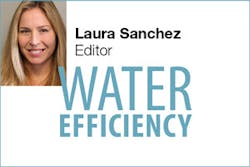Transboundary Aquifers: Complexity Requires Cooperative Efforts
As water scarcity becomes more acute worldwide, water resources shared by nations become increasingly precious. Rivers, because of their above-ground visibility, are often addressed with cooperative management. Transboundary aquifers, on the other hand, are consistently overlooked.
Aquifers are understudied and undermanaged—a blind spot for scientists, water officials, and political leaders. Aquifers are complex systems, a network of interconnected, waterways. There is little consensus on their number, their geographic outlines, or even how water moves through them.
Environmental factors and events on either side of the border affect water resources on both sides. Farming, mining, urban runoff, and irrigation directly affect resources, making it important to comprehensively co-manage, monitor, and map water inflows and outflows. Furthermore, groundwater moves slowly and organically through rock and soil, which means that hydrological problems may not reveal themselves for a decade or more.
Differing classifications, scientific methods, and legislative models further complicate the situation. For example, in the US, groundwater management is a state level issue, whereas in Mexico, it is under federal jurisdiction. International groundwater negotiations, therefore, must take place across multiple layers of government.
And the information itself on these aquifers is often unclear since hydrologic studies performed by one nation often use data only from one side of the border. The total number of aquifers is even in question. Some studies indicate that the United States and Mexico share about 36 aquifers, while others pinpoint only 16. Researchers are challenged to manage a resource that’s not clearly defined.
Startlingly, less than 10 out of 592 of the world’s recognized transnational aquifers have a management agreement in place. Only one aquifer, the Genevese, shared by France and Switzerland, can be considered within a true management agreement, according to Circle of Blue. The 2007 agreement is governed by a joint French-Swiss commission that has the authority to monitor water withdrawals, limit pumping, and monitor aquifer levels.
Today, an aquifer research program between the US and Mexico is conducting the first-ever transboundary aquifer assessment. It pairs scientists and water agencies from both countries and is currently mapping and characterizing two aquifers on the border of Arizona and Sonora, Mexico.
Participating scientists have developed common definitions, data, and maps. They have confirmed the boundaries of two shared aquifers. Future reports will offer the first unified picture of the groundwater systems and provide a new basis for understanding and managing water resources in the Southwest. They published a report on the San Pedro Aquifer in January, and will offer one on the Santa Cruz Aquifer in 2017.
Perhaps this collaboration could be a model for future international aquifer management programs. What solutions do you envision for cooperative, transboundary groundwater management?
